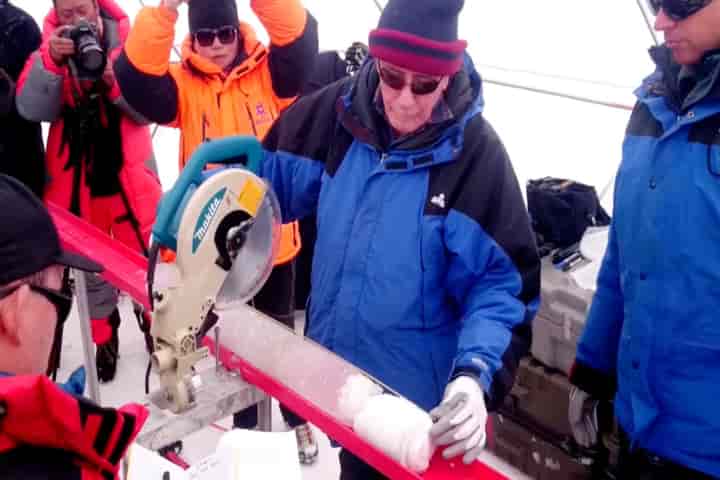In the wake of the two waves of Covid-19 pandemic, the world at large is terrified of viruses, especially the unknown specimens like the Corona one. Now the discovery of novel viruses that scientists came across while studying ice samples, will definitely extend and exacerbate our nightmares.
These viruses, which were nearly 15,000 years old, were found by scientists who study glacier ice from the two ice samples collected from the Tibetan Plateau in China. A large number of these viruses survived because they remained frozen but what is amazing about them is that they are unlike any other ones that have been catalogued so far.
According to an article in sciencedaily.com, these findings, which have been published in Microbiome journal this week, will help scientists to understand as to how these viruses evolved over a period of centuries.
Further, in order to do this study, the researchers also created a new method which is ultra-clean as it analyses microbes and viruses without spoiling or contaminating them.
Talking about this discovery, Zhi-Ping Zhong, the study’s lead author as well as a researcher at the Ohio State University Byrd Polar and Climate Research Center said: "These glaciers were formed gradually, and along with dust and gases, many, many viruses were also deposited in that ice.” Incidentally, microbiology is also a focus area of study for Zhong.
The lead author went on to add: "The glaciers in western China are not well-studied, and our goal is to use this information to reflect past environments. And viruses are a part of those environments."
The ice cores that the researchers analysed were taken from the Guliya ice cap located in Western China in 2015. These cores were collected from high altitudes that is at the summit of Guliya, which is 22,000 feet above sea level and where this ice originated.
Basically the cores contain ice layers that accumulate year after year. These layers when they freeze trap whatever was in the atmosphere around them. Thus these layers make a timeline of sorts which are very useful for the scientists to understand more about climate change, viruses, gases and microbes through history.
Also read: Rodents too help their near & dear ones just like humans
In order to know the age of the ice, researchers used a combination of both traditional and new techniques to date them. Thus they determined that the ice was nearly 15,000 years old.
On analysing the ice, the scientists found genetic codes of 33 viruses. While four had been already identified by other scientists, there were at least 28 which were new. Nearly half of these seemed to have survived at a period when they froze because of the ice.
Elucidating on this, Matthew Sullivan, the study’s co-author and professor of microbiology at Ohio State and Director of Ohio State's Center of Microbiome Science said: “These are viruses that would have thrived in extreme environments. These viruses have signatures of genes that help them infect cells in cold environments — just surreal genetic signatures for how a virus is able to survive in extreme conditions. These are not easy signatures to pull out, and the method that Zhi-Ping developed to decontaminate the cores and to study microbes and viruses in ice could help us search for these genetic sequences in other extreme icy environments — Mars, for example, the moon, or closer to home in Earth's Atacama Desert."
Also read: Climate change triggering change in colour of dragonflies
Since viruses have no common and universal gene, naming a new one and fitting it with those already known involves multiple steps. In order to make comparison of unknown viruses with known ones, the gene sets are compared. For the known viruses the gene sets are catalogued in scientific databases.
During this comparison it was found that four of the Guliya ice cap cores viruses had been previously identified. They were from families that typically infect bacteria. It was found that viruses in concentrations were much lower than have been found to exist in oceans or soil.
The analysis done by the researchers suggested that the viruses were likely to have originated with soil or plants, and not with animals or humans. This was based on both the environment and the databases of known viruses.
Also read: New species of dinosaur — among the largest in the world – discovered in Australia
Studying viruses in glaciers is relatively new and so far two previous studies have identified viruses in ancient glacier ice. Yet this area of study is assuming importance with the changes in climate, according to Lonnie Thompson, a senior author of the study, and distinguished university professor of earth sciences at Ohio State and senior research scientist at the Byrd Center.
Thompson remarked: "We know very little about viruses and microbes in these extreme environments, and what is actually there. The documentation and understanding of that is extremely important: How do bacteria and viruses respond to climate change? What happens when we go from an ice age to a warm period like we're in now?"




















